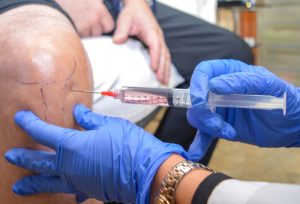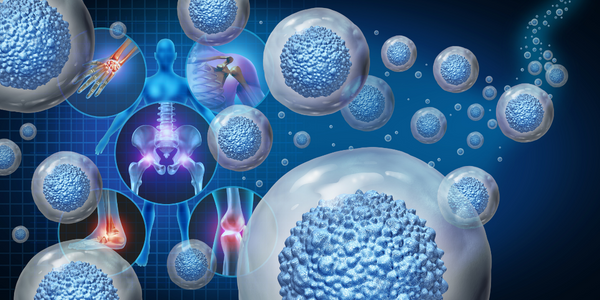As men and women age, joint damage is a common issue that can occur in any area of the body. The damage can be caused by a previous injury, arthritis, or infection. When the joint is damaged, it can be difficult to move, and pain may be present. In severe cases, the joint may need to be surgically treated or may even need to be replaced with an artificial joint.
One new treatment option for repairing joint damage that is attracting attention from aging adults is stem cell therapy.
How Stem Cell Therapy Can Help Repair Joint Damage
Though a controversial topic for some, stem cells can develop into other types of cells in the body. These types of cells are found in embryos and certain body parts, such as the brain and spinal cord. Using stem cell therapy, stem cells are harvested from the patient’s body or a stem cell donor and are then injected into the joint, where they will help to repair any damage that has been done.
One of the major problems associated with joint damage is the loss of cartilage, the smooth, rubbery tissue that covers the ends of bones and allows them to move effortlessly against each other. When cartilage is damaged, it can no longer provide this cushioning effect, leading to pain and stiffness. In some cases, the damage may be severe enough to cause the bones to grind against each other.
Stem cell therapy offers a potential solution to this problem by providing a way to regenerate damaged cartilage. In this procedure, a sample of healthy cells is taken from another part of the body and injected into the damaged area. These cells then divide and grow, eventually forming new, healthy tissue cartilage where there once was none or a lack of cartilage inhibited the proper use of the joint.
While more research is needed, there is hope this therapy could one day provide a safe and effective treatment for joint damage in humans.
The Benefits of This Therapy Over Traditional Surgery

One of the key benefits of this therapy is that it can help to regenerate damaged tissue. This is because the cells can divide and multiply, thus they can replace cells that have been lost or damaged. In addition, these cells can help stimulate the growth of new blood vessels, improving blood flow to the area and speeding up healing.
Another benefit of this therapy is that it can be used to target specific areas of the body and can be tailored to each patient’s need. Successful stem cell therapies have thus far resulted in pain relief and improvement in joint functionality or quality of life, with limited early studies having demonstrated improvement in new cartilage or bone formation to cure arthritis.
Finally, this therapy is often much cheaper than traditional surgery. Though still pricey, with the typical cost of a single knee injection at direct-to-consumer stem cell clinics at around $5,000, however a vast comparison to traditional knee replacement surgery which can cost ranging between $15,000 and $50,000. The reason for this lower cost is because it is less invasive and requires fewer resources. As a result, it is an excellent option for patients looking for an affordable way to improve their health with quicker recovery periods.
How to Get Started with Stem Cell Therapy for Joint Damage
If you are considering this therapy for joint damage, there are three key steps that you need to take.
The first step is to consult with a qualified doctor who has experience with this type of treatment. This is important because this therapy is still relatively new, and not all doctors know the latest research and techniques to determine the best approach for individualized cases.
The second step is to undergo a series of tests to ensure you are a good candidate for the treatment. These tests will assess your joints’ health and the damage’s extent. They may also include blood tests and imaging scans.
The third and final step is to undergo the actual therapy treatment. This usually involves having stem cells injected into the damaged joint tissue. The exact procedure will vary depending on the severity of the damage and the patient’s specific needs. However, most treatments only require a single injection and can be completed in just one or two office visits.
Although this therapy is still in its early stages, its potential to repair joint damage is promising. It seems that stem cells may be able to help regenerate cartilage, leading to the repair of damaged joints with less invasive means than traditional surgery, making it an attractive option for many patients.





